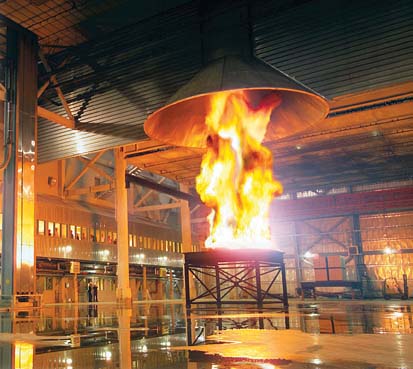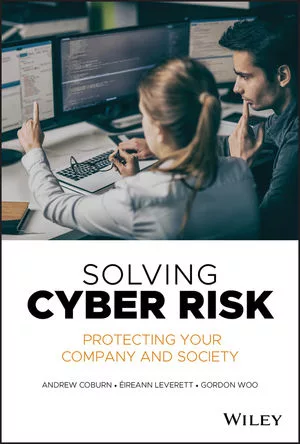Leveling Risk of Forced Entry

Forced entry attacks relate to burglaries and civil disturbance threats. HP White Specification 02: TP-05000.02, dated September 1993, indicates five levels of force entry protection against various types of attacks. These include blunt impact (hammers), sharp impact (chisels), thermal stress (torches) and chemical deterioration (solvents). The levels of protection relate to either the number of impacts a forced entry protected assembly will withstand or the time, in minutes, required to bypass a forced entry protected assembly with the use of torches or chemical agents. Level I offers the least amount of resistance protection; Level V offers the most amount of resistance protection.
Ballistic attacks relate to gunshot bullet threats. UL Laboratories: UL 752 Criteria, Table 3.1, dated Jan. 27, 1995, indicates eight levels of ballistic resistant protection. Level 1 ballistic protected assemblies is the least resistant, and will only withstand a single shot from small handguns. Level 3 ballistic protected assemblies will withstand multiple (four to five) shots from average handguns. Level 4 ballistic protected assemblies will withstand multiple (four to five) shots from high-powered hunting and sporting rifles, such as a .30-06, with a muzzle energy of 971 to 1,175 foot-pounds. Level 8 ballistic protected assemblies are the most resistant, and will withstand multiple shots from high-powered military assault rifles and machine guns. Ballistic attacks may also include punching type threats from shrapnel or high-powered projected metal fragments that may result from an explosion.
Blast attacks relate to explosive bomb threats. The Interagency Security Committee of the U.S. General Services Administration (GSA) developed criteria for blast mitigation design for window systems, which includes performance conditions, or acceptable protection levels from the glass shrapnel fragmentation hazards with a bombing event, and building blast category, or building types and their applicable levels of protection, which also directly relates to the blast level.
These criteria indirectly reflect the velocity and (hence lethality) of glass fragments based on their distance from the window threat. The GSA information is part of a comprehensive security criteria provided in their GSA Security Criteria, dated Oct.8, 1997, which was further clarified with their GSA Facilities Standards For Public Service, or PBS100, dated March 2003. With regard to protection levels from glass fragmentation, GSA criteria indicates five levels of blast resistant performance conditions or acceptable maximum damage level.
Level 5 blast-protected assemblies provide low performance condition protection and are the least resistant, where window systems fail “catastrophically” and glass fragments enter space behind the window, impacting a vertical panel or wall at a distance of 10 feet from the window face.
Level 1 blast protected assemblies provide safe performance condition protection and are the most resistant; the glass panel does not break and no visible damage to the glass panel or frame occurs. Level 3 provides high performance condition protection and is divided into two sub-categories; Levels 3A and 3B. Level 3A designation allows glass to crack, with fragments or glass shards entering the enclosed space and landing on the floor no further than 3.3-feet from the window. Level 3B allows window glass to crack, with fragments or glass shards entering the protected space and landing on the floor no further than 10 feet from the window. Level 4 provides medium performance condition protection, and allows glass to fail and not be fully retained in the frame, with fragments landing on the floor more than 10 feet from the window.

With regard to building types and their applicable levels of protection, GSA criteria indicate five categories of building types. Category Type A applies to unprotected buildings and is the lowest level of protection. Category Type C applies to federal courts and federal buildings, such as the Martin Building, and recommends a level of construction protection to withstand 4 psi maximum blast pressure and a 28 psi-ms maximum blast impulse. This blast corresponds to the threat from a TNT bomb (typically a car bomb), weighing 425 pounds and detonated at a distance of 180 feet from the face of the building. Obviously, smaller bombs situated closer can cause equal or greater damage. Category Type D applies to high-level military facilities, such as the Pentagon, and recommends a level of construction protection to withstand 10 psi maximum blast pressure and 89 psi-ms maximum blast impulse. This blast corresponds to the threat from a TNT bomb (typically a truck bomb), weighing 2500 pounds and detonated at a distance of 200 feet from the face of the building. Category Type E applies to the White House with protection levels that are classified.
Typical governmental facilities, including industrial facilities, are recommended to have at a minimum GSA building category of Type C, with peak pressure of 4 psi and blast impulse of 28 psi-ms for the SMUD facility. To square this inconsistency, it is advisable, where possible, to specify a blast mitigation window film and attachment system that has been tested to comply with the following:
1. The test section must show the recording of the amount of glass fragments, by weight, which entered the test cubicle in the case of GSA class 3A or 3B. For category 3B performance, the total glass fragment mass must be recorded in zones 3A and 3B.
2. The test section must show (for at least three tested specimens) the recording of no more than a medium mass level of glass fragmentation (less than 501 grams of glass particulate) in zones 3A and 3B.
3. The film attachment and/or restraint system must be tested to both pass and failure levels of blast overpressure. Critically, the tests must demonstrate that when the system fails, it does not detach from the window frame, thereby adding an additional hazard to the internal environment beyond that which is present from the glass and film.
If these requirements are not specified, there is a danger that the blast load will be transferred to the window frame and cause failure.
Any restraint system must be proven to reduce the dynamic load transferred to the window frame through elastic absorption or ductility.
Looking for a reprint of this article?
From high-res PDFs to custom plaques, order your copy today!





